anthropic principle
description: philosophical consideration that observations of the Universe must be compatible with the conscious and sapient life that observes it
54 results
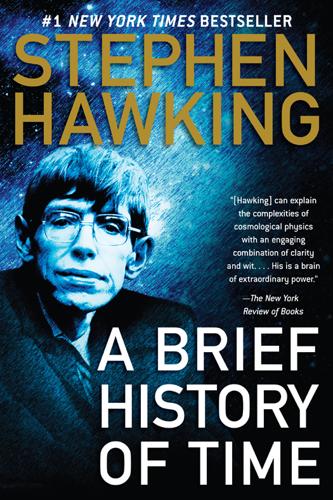
A Brief History of Time
by
Stephen Hawking
Published 16 Aug 2011
However, suppose that only in the smooth regions were galaxies and stars formed and were conditions right for the development of complicated self-replicating organisms like ourselves who were capable of asking the question: why is the universe so smooth? This is an example of the application of what is known as the anthropic principle, which can be paraphrased as “We see the universe the way it is because we exist.” There are two versions of the anthropic principle, the weak and the strong. The weak anthropic principle states that in a universe that is large or infinite in space and/or time, the conditions necessary for the development of intelligent life will be met only in certain regions that are limited in space and time.
…
In this case the only difference between the regions would be their initial configurations and so the strong anthropic principle would reduce to the weak one. A second objection to the strong anthropic principle is that it runs against the tide of the whole history of science. We have developed from the geocentric cosmologies of Ptolemy and his forebears, through the heliocentric cosmology of Copernicus and Galileo, to the modern picture in which the earth is a medium-sized planet orbiting around an average star in the outer suburbs of an ordinary spiral galaxy, which is itself only one of about a million million galaxies in the observable universe. Yet the strong anthropic principle would claim that this whole vast construction exists simply for our sake.
…
Most sets of values would give rise to universes that, although they might be very beautiful, would contain no one able to wonder at that beauty. One can take this either as evidence of a divine purpose in Creation and the choice of the laws of science or as support for the strong anthropic principle. There are a number of objections that one can raise to the strong anthropic principle as an explanation of the observed state of the universe. First, in what sense can all these different universes be said to exist? If they are really separate from each other, what happens in another universe can have no observable consequences in our own universe.
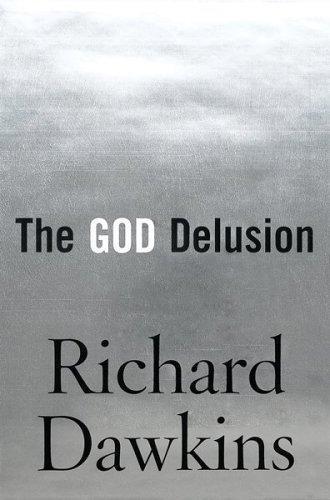
The God Delusion
by
Richard Dawkins
Published 12 Sep 2006
The quotation from the ‘eloquent blogger’ is at http://www.religionisbullshit.net/blog/2005_09_01_archive.php. 66 Dawkins (1995). The anthropic principle: planetary version 67 Carter admitted later that a better name for the overall principle would be ‘cognizability principle’ rather than the already entrenched term ‘anthropic principle’: B. Carter, ‘The anthropic principle and its implications for biological evolution’, Philosophical Transactions of the Royal Society of London A, 310, 1983, 347–63. For a book-length discussion of the anthropic principle, see Barrow and Tipler (1988). 68 Comins (1993). 69 I spelled this argument out more fully in The Blind Watchmaker (Dawkins 1986). The anthropic principle: cosmological version 70 Murray Gell-Mann, quoted by John Brockman on the ‘Edge’ website, http://www.edge.org/3rd_culture/bios/smolin.html. 71 Ward (1996: 99); Polkinghorne (1994: 55).
…
However small the minority of planets with just the right conditions for life may be, we necessarily have to be on one of that minority, because here we are thinking about it. It is a strange fact, incidentally, that religious apologists love the anthropic principle. For some reason that makes no sense at all, they think it supports their case. Precisely the opposite is true. The anthropic principle, like natural selection, is an alternative to the design hypothesis. It provides a rational, design-free explanation for the fact that we find ourselves in a situation propitious to our existence. I think the confusion arises in the religious mind because the anthropic principle is only ever mentioned in the context of the problem that it solves, namely the fact that we live in a life-friendly place.
…
And, thanks to Darwin, we know how it is brought about: by natural selection. The anthropic principle is impotent to explain the multifarious details of living creatures. We really need Darwin’s powerful crane to account for the diversity of life on Earth, and especially the persuasive illusion of design. The origin of life, by contrast, lies outside the reach of that crane, because natural selection cannot proceed without it. Here the anthropic principle comes into its own. We can deal with the unique origin of life by postulating a very large number of planetary opportunities. Once that initial stroke of luck has been granted – and the anthropic principle most decisively grants it to us – natural selection takes over: and natural selection is emphatically not a matter of luck.
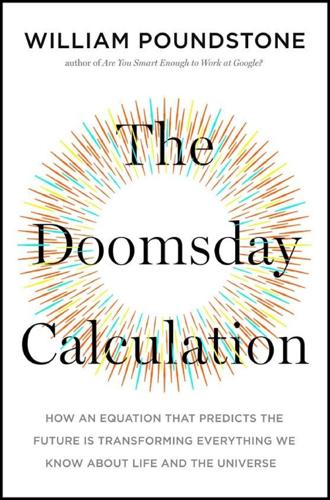
The Doomsday Calculation: How an Equation That Predicts the Future Is Transforming Everything We Know About Life and the Universe
by
William Poundstone
Published 3 Jun 2019
Physicists have been hissed for using “the A word” in speeches. You either love the anthropic principle or hate it; you find it “deep” or a facile witticism. Wherever you go, there you are. The anthropic principle’s mixed reputation owes something to the fact that people have interpreted it in so many different ways. Carter himself offered two versions. His weak anthropic principle is, despite the “feeble” billing, the more important one. This is a simple selection effect saying that, as observers, we have to find ourselves in a part of the universe compatible with observers. Carter also offered a strong anthropic principle saying that, as observers, we have to find ourselves in a universe whose laws permit the existence of observers.
…
Physicists have often remarked that some of the observed universe’s attributes seem improbably tailored to the origin and evolution of intelligent life. This too might be understood as a selection effect. Carter called this thesis the anthropic principle. He intended the anthropic principle as a commonsense counterweight to the Copernican principle. Carter’s idea has since become one of the more polarizing concepts of modern physics. It is probably fair to say that most physicists consider the anthropic principle valid but not necessarily useful. Some roll their eyes at what they see as a catchy banality that gets more than its share of media attention. “Anthropic notions flourish in the compost of lax language and beguiled thought,” wrote one unsympathetic reviewer.
…
“Turtle Trading: A Market Legend.” Investopedia, February 13, 2018. Carroll, Rory. “Elon Musk’s Mission to Mars.” Guardian, July 17, 2013. Carter, Brandon. “The Anthropic Principle and Its Implications for Biological Evolution.” Philosophical Transactions of the Royal Society of London Series A 310, no. 1512 (1983): 347–363. . “Anthropic Principle in Cosmology.” June 2004. arXiv:gr-qc/0606117v1. . “Large Number Coincidences and the Anthropic Principle in Cosmology.” In M. S. Longair, ed., Confrontation of Cosmological Theories with Observational Data, Proceedings of the Symposium, Kraków, September 10–12, 1973, IAU Symposium No. 63, Dordrecht: D.
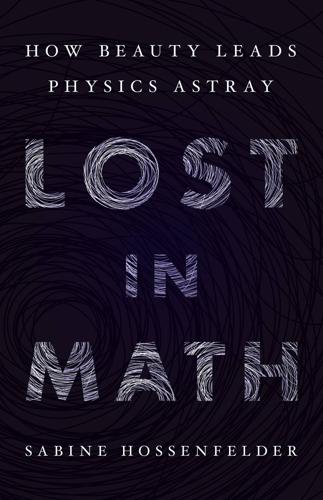
Lost in Math: How Beauty Leads Physics Astray
by
Sabine Hossenfelder
Published 11 Jun 2018
TO CALCULATE probabilities in the multiverse we must take into account that life exists in our universe. It sounds obvious, but not every possible law of nature creates sufficiently complex structures, and therefore the correct law must fulfill certain requirements—for example, give rise to stable atoms, or something similar to atoms. This requirement is known as the “anthropic principle.” The anthropic principle doesn’t normally result in precise conclusions, but within the context of a specific theory it lets us estimate which values the theory’s parameters can possibly have and still be compatible with the observation that life exists. It’s like when you see someone walking down the street with a Starbucks cup and you conclude the conditions in this part of town must allow for Starbucks cups to arise.
…
Not very precise, and maybe not terribly interesting, but still, it tells you something about your environment. While the anthropic principle might strike you as somewhat silly and trivially true, it can be useful to rule out some values of certain parameters. When I see you drive to work by car every morning, for example, I can conclude you must be old enough to have a driver’s license. You might just be stubbornly disobeying laws, but the universe can’t do that. I have to warn you, however, that the reference to “life” in connection with the anthropic principle or fine-tuning is a common but superfluous verbal decoration. Physicists don’t have a lot of business with the science of self-aware conscious beings.
…
The first successful use of the anthropic principle was Fred Hoyle’s 1954 prediction of properties of the carbon nucleus that are necessary to enable the formation of carbon in stellar interiors, properties that were later discovered as predicted.23 Hoyle is said to have exploited the fact that carbon is central to life on Earth, hence stars must be able to produce it. Some historians have questioned whether this was indeed Hoyle’s reasoning, but the mere fact that it could have been shows that anthropic argumentation can lead to useful conclusions.24 The anthropic principle, therefore, is a constraint on our theories that enforces agreement with observation.
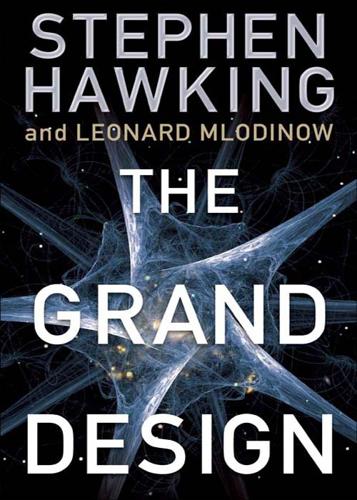
The Grand Design
by
Stephen Hawking
and
Leonard Mlodinow
Published 14 Jun 2010
That is, the fact of our being restricts the characteristics of the kind of environment in which we find ourselves. That principle is called the weak anthropic principle. (We’ll see shortly why the adjective “weak” is attached.) A better term than “anthropic principle” would have been “selection principle,” because the principle refers to how our own knowledge of our existence imposes rules that select, out of all the possible environments, only those environments with the characteristics that allow life. Though it may sound like philosophy, the weak anthropic principle can be used to make scientific predictions. For example, how old is the universe? As we’ll soon see, for us to exist the universe must contain elements such as carbon, which are produced by cooking lighter elements inside stars.
…
The age of the universe is also an environmental factor, since there are an earlier and a later time in the history of the universe, but we must live in this era because it is the only era conducive to life. Environmental coincidences are easy to understand because ours is only one cosmic habitat among many that exist in the universe, and we obviously must exist in a habitat that supports life. The weak anthropic principle is not very controversial. But there is a stronger form that we will argue for here, although it is regarded with disdain among some physicists. The strong anthropic principle suggests that the fact that we exist imposes constraints not just on our environment but on the possible form and content of the laws of nature themselves. The idea arose because it is not only the peculiar characteristics of our solar system that seem oddly conducive to the development of human life but also the characteristics of our entire universe, and that is much more difficult to explain.
…
Hoyle wrote, “I do not believe that any scientist who examined the evidence would fail to draw the inference that the laws of nuclear physics have been deliberately designed with regard to the consequences they produce inside the stars.” At the time no one knew enough nuclear physics to understand the magnitude of the serendipity that resulted in these exact physical laws. But in investigating the validity of the strong anthropic principle, in recent years physicists began asking themselves what the universe would have been like if the laws of nature were different. Today we can create computer models that tell us how the rate of the triple alpha reaction depends upon the strength of the fundamental forces of nature. Such calculations show that a change of as little as 0.5 percent in the strength of the strong nuclear force, or 4 percent in the electric force, would destroy either nearly all carbon or all oxygen in every star, and hence the possibility of life as we know it.
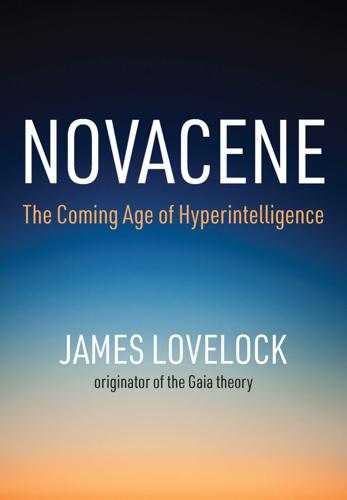
Novacene: The Coming Age of Hyperintelligence
by
James Lovelock
Published 27 Aug 2019
They invited me ‘to participate in the first Surveyor mission . . . which is scheduled for a lunar soft landing’ two years later. They wanted me to help make a gas chromatograph. It had to be as small as possible. I knew at once I could do it, even though I did not know how. The second effect of the book was to make me think we may indeed be chosen. Barrow and Tipler start from the anthropic principle. This sounds like a purely philosophical argument, but in fact it has serious implications for science. In its most basic form it says something which may, on reflection, seem obvious. This is that in attempting to describe the cosmos we must first assume that it must be the kind of cosmos that can produce thinking beings like us.
…
This is tantamount to a religious statement – not in the sense of the stories in which I don't believe but in the sense of a deep truth in which I do. That outstanding leader of Czechoslovakia and then the Czech Republic, Václav Havel, stated in 2003 when he received the Freedom Prize in Philadelphia that the cosmic anthropic principle and Gaia were two hypotheses that pointed a seemly way to the future. The connection was right and profoundly true. I find it deeply moving to consider how, from its origin at the Big Bang, our universe was formed – first, the light elements from which the early stars and galaxies were born; then, over billions of years, the elements of life slowly accumulated, as did the star systems on whose planets they could combine and eventually form the first living cells.
…
We shall correct the harmful mutations of the reproduction of life – artificial or biological – very much faster than the sluggish process of natural selection. I can't help wondering whether, when the cyborgs are the dominant species, there will emerge through their sophisticated evolutionary process an individual able to answer the questions raised by the cosmic anthropic principle. I wonder if they will discover a proof of my own view that the bit is the fundamental particle from which the universe is formed. 18 Beyond Human When imagining the intelligent machines of the future, it is astonishing how often we come up with something that looks or acts like a human.
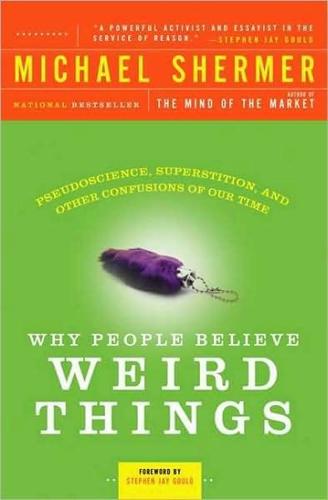
Why People Believe Weird Things: Pseudoscience, Superstition, and Other Confusions of Our Time
by
Michael Shermer
Published 1 Jan 1997
The principle is tautological: in order for the universe to be observed, there must be observers. Obviously. Who would disagree? The controversy generated by Carter, Barrow, and Tipler lies not with the Weak Anthropic Principle but with the Strong Anthropic Principle, the Final Anthropic Principle, and the Participatory Anthropic Principle. Barrow and Tipler define the Strong Anthropic Principle as "The Universe must have those properties which allow life to develop within it at some stage in its history" and the Final Anthropic Principle as "Intelligent information-processing must come into existence in the Universe, and, once it comes into existence, it will never die out" (pp. 21-23).
…
According to the Copernican Principle, our sun is merely one of a hundred billion stars on the outskirts of an average galaxy, itself one of a hundred billion (or more) galaxies in the known universe that cares not one iota for humanity. By contrast, Carter, Barrow, and Tipler's Anthropic Principle insists that humans do have a significant role in the cosmos, both in its observation and its existence. Carter (1974) takes the part of Heisenberg's Uncertainty Principle that says that the observation of an object changes it and extrapolates this part from the atomic level (where Heisenberg was operating) to the cosmological level: "What we can expect to observe must be restricted by the conditions necessary for our presence as observers." In its weak form—the Weak Anthropic Principle—Barrow and Tipler contend quite reasonably that for the cosmos to be observed, it must be structured in such a way as to give rise to observers: "The basic features of the Universe, including such properties as its shape, size, age and laws of change, must be observed to be of a type that allows the evolution of observers, for if intelligent life did not evolve in an otherwise possible universe, it is obvious that no one would be asking the reason for the observed shape, size, age and so forth of the Universe" (1986, p. 2).
…
In classifying the relationship of science and religion, I would like to suggest a three-tiered taxonomy: The same-worlds model: Science and religion deal with the same subjects and not only is there overlap and conciliation but someday science may subsume religion completely. Frank Tipler's cosmology (1994), based on the anthropic principle and the eventual resurrection of all humans through a supercomputer's virtual reality in the far future of the universe, is one example. Many humanists and evolutionary psychologists foresee a time when science not only can explain the purpose of religion, it will replace it with a viable secular morality and ethics.

From eternity to here: the quest for the ultimate theory of time
by
Sean M. Carroll
Published 15 Jan 2010
And at this point he makes a startlingly modern move—he invokes the anthropic principle. The anthropic principle is basically the idea that any sensible account of the universe around us must take into consideration the fact that we exist. It comes in various forms, from the uselessly weak—“the fact that life exists tell us that the laws of physics must be compatible with the existence of life”—to the ridiculously strong—“the laws of physics had to take the form they do because the existence of life is somehow a necessary feature.” Arguments over the status of the anthropic principle—Is it useful? Is it science?—grow quite heated and are rarely very enlightening.
…
You might hope to make some statistical predictions, on the basis of the anthropic principle; “sixty-three percent of observers in the multiverse will find three families of fermions,” or something to that effect. And many people are trying hard to do just that. But it’s not clear whether it’s even possible, especially since the number of observers experiencing certain features will often end up being infinitely big, in a universe that keeps inflating forever. For the purposes of this book, we are very interested in the multiverse, but not so much in the details of the landscape of many different vacua, or attempts to wrestle the anthropic principle into a useful set of predictions.
…
—grow quite heated and are rarely very enlightening. Fortunately, we (and Boltzmann) need only a judicious medium-strength version of the anthropic principle. Namely, imagine that the real universe is much bigger (in space, or in time, or both) than the part we directly observe. And imagine further that different parts of this bigger universe exist in very different conditions. Perhaps the density of matter is different, or even something as dramatic as different local laws of physics. We can label each distinct region a “universe,” and the whole collection is the “multiverse.” The different universes within the multiverse may or may not be physically connected; for our present purposes it doesn’t matter.

The Singularity Is Near: When Humans Transcend Biology
by
Ray Kurzweil
Published 14 Jul 2005
However, given that the SETl assumption implies that there are billions of such highly developed civilizations, it seems unlikely that all of them have made the same decision to stay out of our way. The Anthropic Principle Revisited. We are struck with two possible applications of an anthropic principle, one for the remarkable biofriendly laws of our universe, and one for the actual biology of our planet. Let's first consider the anthropic principle as applied to the universe in more detail. The question concerning the universe arises because we notice that the constants in nature are precisely what are required for the universe to have grown in complexity.
…
It amazes me that people can have such blinkered vision, that they can concentrate just on the final state of the universe, and not ask how and why it got there.92 The perplexity of how it is that the universe is so "friendly" to biology has led to various formulations of the anthropic principle. The "weak" version of the anthropic principle points out simply that if it were not the case, we wouldn't be here to wonder about it. So only in a universe that allowed for increasing complexity could the question even be asked. Stronger versions of the anthropic principle state that there must be more to it; advocates of these versions are not satisfied with a mere lucky coincidence. This has opened the door for advocates of intelligent design to claim that this is the proof of God's existence that scientists have been asking for.
…
Indeed it is very unlikely. But equally unlikely is the existence of our universe, with its set of laws of physics and related physical constants, so exquisitely, precisely what is needed for the evolution of life to be possible. But by the anthropic principle, if the universe didn't allow the evolution of life we wouldn't be here to notice it. Yet here we are. So by a similar anthropic principle, we're here in the lead in the universe. Again, if we weren't here, we would not be noticing it. Let's consider some arguments against this perspective. Perhaps there are extremely advanced technological civilizations out there, but we are outside their light sphere of intelligence.
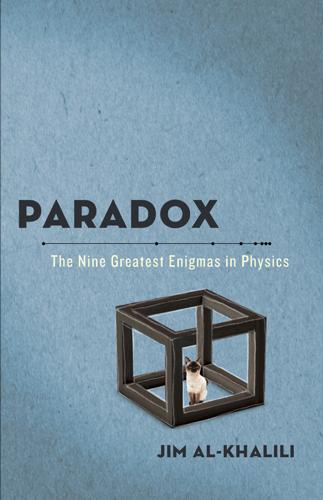
Paradox: The Nine Greatest Enigmas in Physics
by
Jim Al-Khalili
Published 22 Oct 2012
We are each at the end of a long and highly improbable chain of events that stretches all the way back to the origin of life itself. Break any one of the links in that chain and you would not be here. So you can ponder if you wish how the anthropic principle applies to you; but this is no more remarkable than the lottery winner contemplating his good fortune. And had his numbers not come up, then someone else would have won and could equally reflect on the improbable odds of her win. Brandon Carter’s argument has become known as the Weak Anthropic Principle. There also exists a Strong Anthropic Principle, which states that the Universe has to be the way it is in order for intelligent life to evolve somewhere and at some point in time in order to question its existence.
…
This and other issues, such as the way multicelled organisms evolved from single-celled ones billions of years ago, will tell us whether we can expect these important steps in the evolutionary journey from abiogenesis to humans to have occurred elsewhere in the Universe. THE ANTHROPIC PRINCIPLE There exists a far more profound question than the one posed by Fermi’s paradox that I must mention before I finish this chapter. It is one that until recent years was restricted to philosophical circles alone, but has now entered mainstream physics. The idea at its core is called the anthropic principle, which focuses on the sheer improbability of our universe, or at least our small corner of it, being so ideally suited and fine-tuned for us, humans, to exist.
…
It might then be strong enough to bind two protons, in which case hydrogen would convert to helium far more easily. In fact, all the hydrogen in the Universe would have been used up and converted into helium just after the Big Bang. With no hydrogen, there would be no possibility of combining it with oxygen to make water and hence no chance of life (as we understand it) ever appearing. The anthropic principle seems to be saying that our very existence determines certain properties of the Universe, because if they were any different we would not be here to question them. But is this really so remarkable? Maybe if the Universe were different, we—whatever “we” would then mean—would have evolved according to whatever those conditions would have allowed and we would still be asking: how come the Universe is so finely tuned?

Big Bang
by
Simon Singh
Published 1 Jan 2004
The eminent physicist Freeman Dyson wrote: ‘The more I examine the universe and the details of its architecture, the more evidence I find that the universe in some sense must have known we were coming.’ This harks back to the anthropic principle mentioned in Chapter 5, which Fred Hoyle exploited to work out how carbon is created within stars. The anthropic principle states that any cosmological theory must take into account the fact that the universe has evolved to contain us. It implies that this should be a significant element in cosmological research. The Canadian philosopher John Leslie devised a firing squad scenario to elucidate the anthropic principle. Imagine that you have been accused of treason and are awaiting execution in front of a firing squad of twenty soldiers.
…
Similarly, it seems to defy the odds that the six numbers that characterise the universe have very special values that allow life to flourish. So do we ignore this and just count ourselves extremely lucky, or do we look for special meaning in our extraordinarily good fortune? According to the extreme version of the anthropic principle, the fine-tuning of the universe which has allowed life to evolve is indicative of a tuner. In other words, the anthropic principle can be interpreted as evidence for the existence of a God. However, an alternative view is that our universe is part of a multiverse. The dictionary definition of the universe is that it encompasses everything, but cosmologists tend to define the universe as the collection of only those things that we can perceive or that can influence us.
…
absorption The process by which atoms absorb light at specific wavelengths, allowing their presence to be detected by spectroscopy by identifying the ‘missing’ wavelengths. alpha particle A subatomic particle ejected during certain kinds of radioactive decay. The particle, consisting of two protons and two neutrons, is identical to the nucleus of a helium atom. anthropic principle The principle that states that, since humans are known to exist, the laws of physics must be such that life can exist. In its extreme form, the anthropic principle states that the universe has been designed to allow life. arcminute A unit used in the measurement of very small angles, equal to 1/60 of 1°. arcsecond A unit used in the measurement of very small angles, equal to 1/60 of an arcminute or 1/3,600 of 1°.
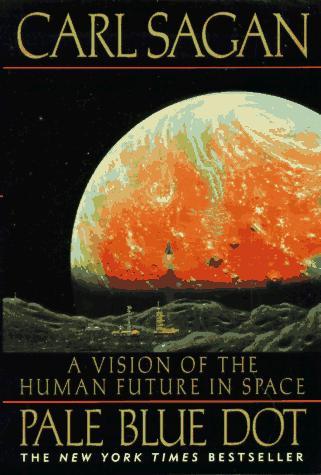
Pale Blue Dot: A Vision of the Human Future in Space
by
Carl Sagan
Published 8 Sep 1997
What happens when smart machines are able to manufacture smarter machines? PERHAPS THE CLEAREST INDICATION that the search for an unmerited privileged position for humans will never be wholly abandoned is what in physics and astronomy is called the Anthropic Principle. It would be better named the Anthropocentric Principle. It comes in various forms. The "Weak" Anthropic Principle merely notes that if the laws of Nature and the physical constants— such as the speed of light, the electrical charge of the electron, the Newtonian gravitational constant, or Planck's quantum mechanical constant had been different, the course of events leading to the origin of humans would never have transpired.
…
Under other laws and constants, atoms would not hold together, stars would evolve too quickly to leave sufficient time for life to evolve on nearby planets, the chemical elements of which life is made would never have been generated, and so on. Different laws, no humans. There is no controversy about the Weak Anthropic Principle: Change the laws and constants of Nature, if you could, and a very different universe may emerge—in many cases, a universe incompatible with life. * The mere fact that we exist implies (but does not impose) constraints on the laws of Nature. In contrast, the various "Strong" Anthropic Principles go much farther; some of their advocates come close to deducing that the laws of Nature and the values of the physical constants were established (don't ask how or by Whom) so that humans would eventually come to be.
…
Even if the existence of such universes were to follow firmly from well-established theories—of quantum mechanics or gravitation, say—we could not be sure that there weren't better theories that predict no alternative universes. Until that time comes, if it ever does, it seems to me premature to put faith in the Anthropic Principle as an argument for human centrality or uniqueness. Finally, even if the Universe were intentionally created to allow for the emergence of life or intelligence, other beings may exist on countless worlds. If so, it would be cold comfort to anthropocentrists that we inhabit one of the few universes that allow life and intelligence. There is something stunningly narrow about how the Anthropic Principle is phrased. Yes, only certain laws and constants of nature are consistent with our kind of life.
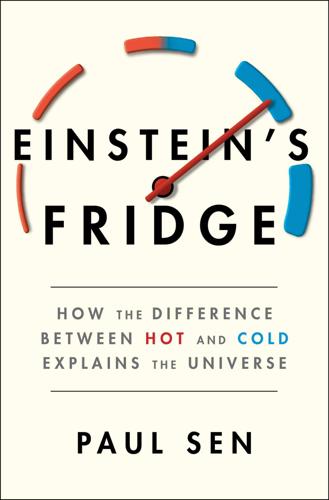
Einstein's Fridge: How the Difference Between Hot and Cold Explains the Universe
by
Paul Sen
Published 16 Mar 2021
Or as Boltzmann put it: “A living being that finds itself in such a world at a certain period of time can define the time direction as going from less probable to more probable states (the former will be the ‘past’ and the latter the ‘future’), and by virtue of this definition he will find the universe is ‘initially’ always in an improbable state.” Most of the universe is dead, but we can’t know about that dead part because it’s impossible to live in. This kind of reasoning is known as the anthropic principle, which states that a universe that humans live in must run according to physical laws that permit human life. This sounds like a tautology, but these days physicists and cosmologists often use this principle to explain the mysterious fact that the universe appears “fine-tuned” in a way that’s conducive to our existence.
…
This consists of many other universes where the constants of nature are indeed unsuitable for life. But because we can’t live in those universes, we are only aware of our universe, with its values for the constants of nature. Although the context of this reasoning is rather different than Boltzmann’s, the method, the anthropic principle, is his. So how plausible is Boltzmann’s creation story—that our habitable universe began as a random, highly unlikely fluctuation that created a region of low entropy? Most modern cosmologists would probably reject Boltzmann’s explanation, but simply by raising the question, Boltzmann defined a topic at the heart of modern theoretical physics.
…
statistically unlikely low-entropy state: For a detailed discussion of Boltzmann’s response to Zermelo, see From Eternity to Here: The Quest for the Ultimate Theory of Time by Sean Carroll. “A living being”: See “On Zermelo’s Paper” by Boltzmann, from Kinetic Theory, vol. 2, by Stephen G. Brush. This kind of reasoning is known as the anthropic principle: See From Eternity to Here by Carroll. Boltzmann brain: See “Can the Universe Afford Inflation?” by Andreas Albrecht and Lorenzo Sorbo, Physical Review D 70 (2004); and see From Eternity to Here by Carroll. “For some reason, the universe”: The Feynman Lectures on Physics 1, chap. 46, “Ratchet and Pawl.”

In Our Own Image: Savior or Destroyer? The History and Future of Artificial Intelligence
by
George Zarkadakis
Published 7 Mar 2016
The AI Singularity futuristic narrative seems like a retelling of Teilhard’s Omega Point – or Judgement Day if you prefer – when the sum of intelligence in the universe accelerates exponentially thanks to self-improving Artificial Intelligence. Thereafter AI absorbs all sentience into its merciful wholeness. The verdict is out whether this would be heaven or hell. Teilhard has also been very influential on the authors of the Anthropic Principle.20 The Anthropic Principle tries to make sense of why the universe is so finely tuned for life to emerge and evolve. This fact is profoundly evident from the so-called ‘physical constants’, pure numbers that govern the natural laws. An example of a physical constant is the ‘Plank constant’, the number 6.62606957×10-34 m2 kg/s that shows up in just about everything concerning quantum physics.
…
If the Plank constant were slightly different from 6.62606957, there would not be stable nuclei in atoms, which means that atoms would decay faster than they do, and therefore there would not be complex chemical molecules. No chemistry means no life, no humans, and no AI. So how come the Plank constant is exactly right for life? Why doesn’t it have any other value but this ‘right’ one? The Anthropic Principle claims, somewhat tautologically, that the universe is finely tuned because we are here to observe it. There simply could not have been any other way. Only a universe capable of eventually supporting life could produce intelligent observers, who would then observe how finely tuned that universe is.
…
If there have been, or are, other universes different from ours we might as well regard them as non-existent: there is no one there to observe them. This innocent sounding tautology becomes very controversial in its ‘stronger’ version, one that Teilhard would recognise and rejoice in: that the universe is compelled to allow conscious life to emerge eventually. This is where the Strong Anthropic Principle meets the AI Singularity: Kurzweil, Barrow and Tippler believe that there must be a purpose for intelligence in the universe. That intelligence cannot be a mere evolutionary accident that took place on a small blue planet on the outer ridges of an insignificant galaxy amongst the hundred billion galaxies that make up the observable universe.
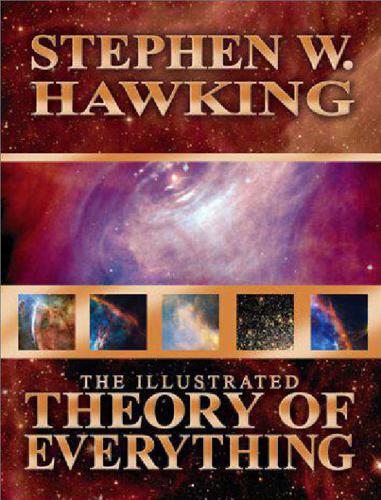
Illustrated Theory of Everything: The Origin and Fate of the Universe
by
Stephen Hawking
Published 1 Aug 2009
The infla-tionary model showed that the present state of the universe could have arisenfrom quite a large number of different initial configurations. It cannot be thecase, however, that every initial configuration would have led to a universelike the one we observe. So even the inflationary model does not tell us whythe initial configuration was such as to produce what we observe. Must we turnto the anthropic principle for an explanation? Was it all just a lucky chance?That would seem a counsel of despair, a negation of all our hopes of under-standing the underlying order of the universe. QUANTUM GRAVITY In order to predict how the universe should have started off, one needs laws thathold at the beginning of time.
…
Why should some, but not all, ofthe dimensions be curled up into a small ball? Presumably, in the very earlyuniverse, all the dimensions would have been very curved. Why did threespace and one time dimension flatten out, while the other dimensionsremained tightly curled up? One possible answer is the anthropic principle. Two space dimensions do notseem to be enough to allow for the development of complicated beings like us.For example, two-dimensional people living on a one-dimensional Earthwould have to climb over each other in order to get past each other. If a two-dimensional creature ate something it could not digest completely, it wouldhave to bring up the remains the same way it swallowed them, because if therewere a passage through its body, it would divide the creature into two separateparts.
…
On asmaller scale, the electrical forces that cause the electrons to orbit around thenucleus in an atom would behave in the same way as the gravitational forces.Thus, the electrons would either escape from the atom altogether or it would spi-ral into the nucleus. In either case, one could not have atoms as we know them.It seems clear that life, at least as we know it, can exist only in regions ofspace-time in which three space and one time dimension are not curled upsmall. This would mean that one could appeal to the anthropic principle, pro-vided one could show that string theory does at least allow there to be suchregions of the universe. And it seems that indeed each string theory doesallow such regions. There may well be other regions of the universe, or otheruniverses (whatever that may mean) in which all the dimensions are curledup small, or in which more than four dimensions are nearly flat.
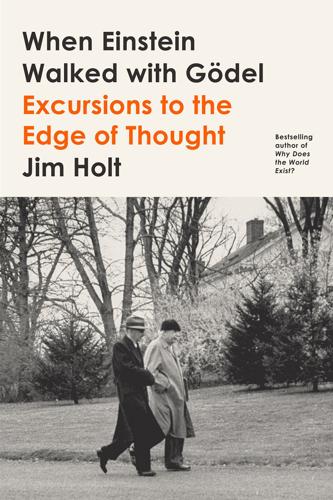
When Einstein Walked With Gödel: Excursions to the Edge of Thought
by
Jim Holt
Published 14 May 2018
The fact that our universe appears to be fine-tuned to engender life is not a matter of luck. Rather, it is a consequence of the “anthropic principle”: if our universe weren’t the way it is, we wouldn’t be here to observe it. Partisans of the anthropic principle say that it can be used to weed out all the versions of string theory that are incompatible with our existence, and so rescue string theory from the problem of nonuniqueness. Copernicus might have dislodged man from the center of the universe, but the anthropic principle seems to restore him to that privileged position. Many physicists despise it; one has depicted it as a “virus” infecting the minds of his fellow theorists.
…
Many physicists despise it; one has depicted it as a “virus” infecting the minds of his fellow theorists. Others, including Witten, accept the anthropic principle, but provisionally and in a spirit of gloom. Still others seem to take perverse pleasure in it. The controversy among these factions has been likened by one participant to “a high-school-cafeteria food fight.” In their books against string theory, Smolin and Woit view the anthropic approach as a betrayal of science. Both agree with Karl Popper’s dictum that if a theory is to be scientific, it must be open to falsification. But string theory, Woit points out, is like Alice’s Restaurant, where, as Arlo Guthrie’s song had it, “you can get anything you want.”
…
But string theory, Woit points out, is like Alice’s Restaurant, where, as Arlo Guthrie’s song had it, “you can get anything you want.” It comes in so many versions that it predicts anything and everything. In that sense, string theory is, in the words of Woit’s title, “not even wrong.” Supporters of the anthropic principle, for their part, rail against the “Popperazzi” and insist that it would be silly for physicists to reject string theory because of what some philosopher said that science should be. Steven Weinberg, who has a good claim to be the father of the standard model of particle physics, has argued that anthropic reasoning may open a new epoch.

The Evolution of Everything: How New Ideas Emerge
by
Matt Ridley
The impossibility of forecasting the position of an electron, or the weather a year ahead, made the world proof against the confidence of prognosticators and experts and planners. The puddle that fits its pothole Briefly in the late twentieth century, some astronomers bought into a new skyhook called the ‘anthropic principle’. In various forms, this argued that the conditions of the universe, and the particular values of certain parameters, seemed ideally suited to the emergence of life. In other words, if things had been just a little bit different, then stable suns, watery worlds and polymerised carbon would not be possible, so life could never get started.
…
Molecular bonds are just the right strength to be stable but breakable at the sort of temperatures found at the typical distance of a planet from a star: any weaker and the universe would be too hot for chemistry, any stronger and it would be too cold. True, but to anybody outside a small clique of cosmologists who had spent too long with their telescopes, the idea of the anthropic principle was either banal or barmy, depending on how seriously you take it. It so obviously confuses cause and effect. Life adapted to the laws of physics, not vice versa. In a world where water is liquid, carbon can polymerise and solar systems last for billions of years, then life emerged as a carbon-based system with water-soluble proteins in fluid-filled cells.
…
In a world where water is liquid, carbon can polymerise and solar systems last for billions of years, then life emerged as a carbon-based system with water-soluble proteins in fluid-filled cells. In a different world, a different kind of life might emerge, if it could. As David Waltham puts it in his book Lucky Planet, ‘It is all but inevitable that we occupy a favoured location, one of the rare neighbourhoods where by-laws allow the emergence of intelligent life.’ No anthropic principle needed. Waltham himself goes on to make the argument that the earth may be rare or even unique because of the string of ridiculous coincidences required to produce a planet with a stable temperature with liquid water on it for four billion years. The moon was a particular stroke of luck, having been formed by an interplanetary collision and having then withdrawn slowly into space as a result of the earth’s tides (it is now ten times as far away as when it first formed).

Giving the Devil His Due: Reflections of a Scientific Humanist
by
Michael Shermer
Published 8 Apr 2020
According to England’s Astronomer Royal Sir Martin Rees, there are at least six constituents that are necessary for “our emergence from a simple Big Bang,” including (1) Ω (omega), the amount of matter in the universe = 1: if Ω were greater than 1, it would have collapsed long ago, and, if Ω were less than 1, no galaxies would have formed. (2) ε (epsilon), how firmly atomic nuclei bind together = 0.007: if ε were even fractionally different, matter could not exist. (3) D, the number of dimensions in which we live = 3. (4) N, the ratio of the strength of electromagnetism to that of gravity = 1039: if N were smaller, the universe would be either too young or too small for life to form. (5) Q, the fabric of the universe = 1/100,000: if Q were smaller, the universe would be featureless, and, if Q were larger, the universe would be dominated by giant black holes. (6) λ (lambda), the cosmological constant, or “antigravity” force that is causing the universe to expand at an accelerating rate = 0.7: if λ were larger, it would have prevented stars and galaxies from forming.2 The most common reason invoked for our universe’s “fine-tuning” is the “anthropic principle,” most forcefully argued by the physicists John Barrow and Frank Tipler in their 1986 book The Anthropic Cosmological Principle: It is not only man that is adapted to the universe. The universe is adapted to man. Imagine a universe in which one or another of the fundamental dimensionless constants of physics is altered by a few percent one way or the other? Man could never come into being in such a universe. That is the central point of the anthropic principle. According to the principle, a life-giving factor lies at the center of the whole machinery and design of the world.3 So in addition to the grand question Why is there something rather than nothing?
…
Electrons in hot atoms emit photons – photons that didn’t exist before they were emitted – which are emitted spontaneously and without specific cause. Why is it that we have grown at least somewhat comfortable with the idea that photons can be created from nothing without cause, but not whole universes?”19 Explanations for Our Universe The anthropic principle invoked to explain our universe troubles most scientists because of its antithesis known as the “Copernican principle,” which states that we are not special. The anthropic principle puts humans right back in the center of the cosmos, not geographically but anthropocentrically – it is all about us. There are a number of counterexplanations for our universe that continue in the scientific tradition of defenestrating humans from the Tower of Babel.
…
If the rate of expansion one second after the big bang had been less by one part in 1010, the universe would have collapsed after a few million years. If it had been greater by one part in 1010, the universe would have been essentially empty after a few million years. In neither case would it have lasted long enough for life to develop. Thus one either has to appeal to the anthropic principle or find some physical explanation of why the universe is the way it is.31 Hawking’s collaborator Roger Penrose layered on even more mystery when he noted that the “extraordinary degree of precision (or ‘fine tuning’) that seems to be required for the Big Bang of the nature that we appear to observe … is one part in 1010123 at least.”
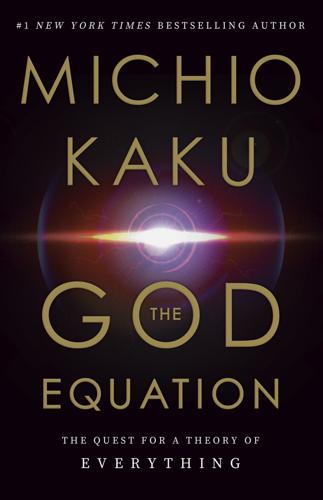
The God Equation: The Quest for a Theory of Everything
by
Michio Kaku
Published 5 Apr 2021
Can it predict our universe? Yes. That is a sensational claim, the goal of physicists for almost a century. But can it predict just one universe? Probably not. This is called the landscape problem. There are several possible solutions to this problem, none of them widely accepted. The first is the anthropic principle, which says that our universe is special because we, as conscious beings, are here to discuss this question in the first place. In other words, there might be an infinite number of universes, but our universe is the one that has the conditions that make intelligent life possible. The initial conditions of the Big Bang are fixed at the beginning of time so that intelligent life can exist today.
…
Perhaps there is a loving God after all, or perhaps there are thousands of dead planets that are too close or too far, and we are on a planet that is just right for sustaining intelligent life that hence can debate this question. Similarly, we may coexist in an ocean of dead universes, and our universe is special only because we are here to discuss this question. The anthropic principle actually allows one to explain a curious experimental fact about our universe: that the basic constants of nature seem to be fine-tuned to allow for life. As physicist Freeman Dyson has written, it seems as if the universe knew that we were coming. For example, if the nuclear force were a bit weaker, the sun would never have ignited, and the solar system would be dark.
…
One can list a number of these accidents that make life possible, and each time we are in the middle of the Goldilocks zone. So the universe is one gigantic crapshoot, and we won the roll. But according to the multiverse theory, it means we coexist with a vast number of dead universes. So perhaps the anthropic principle can pick our universe from the millions of universes in the landscape, because we have conscious life in our universe. My Own Point of View on String Theory I have been working on string theory since 1968, so I have my own definite viewpoint. However you look at it, the final form of the theory has yet to be revealed.

The Singularity Is Nearer: When We Merge with AI
by
Ray Kurzweil
Published 25 Jun 2024
,” Discover, November 2000, https://discovermagazine.com/the-sciences/why-is-there-life. BACK TO NOTE REFERENCE 75 For more on the anthropic principle, including a fascinating conversation between atheist biologist Richard Dawkins and Catholic astronomer Fr. George Coyne, see Roberto Trotta, “What Is the Anthropic Principle?,” Physics World, YouTube video, January 17, 2014, https://www.youtube.com/watch?v=dWkJ8Pl-8l8; Richard Dawkins and George Coyne, “The Anthropic Principle,” jlcamelo, July 9, 2010, https://youtu.be/lm9ZtYkdkEQ?t=102; Joe Rogan and Nick Bostrom, “Joe Rogan Experience #1350—Nick Bostrom,” PowerfulJRE, September 11, 2019, https://web.archive.org/web/20190918171740/https://www.youtube.com/watch?
…
In the memorable formulation of astronomer Hugh Ross, the likelihood of all this fine-tuning happening by chance is like “the possibility of a Boeing 747 aircraft being completely assembled as a result of a tornado striking a junkyard.”[75] The most common explanation of this apparent fine-tuning states that the very low probability of living in such a universe is explained by observer selection bias.[76] In other words, in order for us to even be considering this question, we must inhabit a fine-tuned universe—if it had been otherwise, we wouldn’t be conscious and able to reflect on that fact. This is known as the anthropic principle. Some scientists believe that such an explanation is adequate. But if we believe that reality exists independently of ourselves as observers, this cannot be fully satisfying. Martin Rees considers a compelling question we might still ask. As he puts it, “Suppose you are in front of a firing squad, and they all miss.
…
Barnes, “The Fine-Tuning of the Universe for Intelligent Life,” Publications of the Astronomical Society of Australia 29, no. 4 (2012): 529–64, doi:10.1071/AS12015. BACK TO NOTE REFERENCE 58 Friedrich, “Fine-Tuning,” Stanford Encyclopedia; Lawrence J. Hall et al., “The Weak Scale from BBN,” Journal of High Energy Physics 2014, no. 12, article 134 (2014), doi.org/10.1007/JHEP12(2014)134; Bernard J. Carr and Martin J. Rees, “The Anthropic Principle and the Structure of the Physical World,” Nature 278 (April 12, 1979): 605–12, https://www.nature.com/articles/278605a0. BACK TO NOTE REFERENCE 59 Craig J. Hogan, “Why the Universe Is Just So,” Reviews of Modern Physics 72, no. 4 (October 1, 2000): 1149–61, https://journals.aps.org/rmp/abstract/10.1103/RevModPhys.72.1149; Craig J.
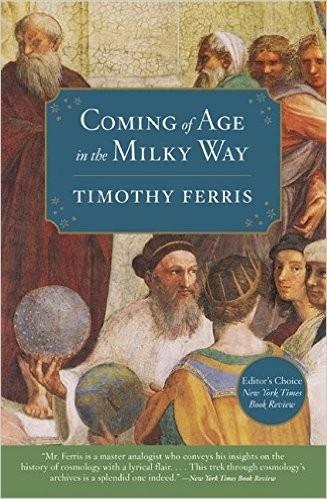
Coming of Age in the Milky Way
by
Timothy Ferris
Published 30 Jun 1988
.* Alternately, one could “explain” the flatness of the universe by identifying it as a prerequisite of human existence. This argument, called the anthropic principle, went as follows: Were the cosmic matter density only slightly higher, the universe would have stopped expanding and have collapsed before enough time had elapsed for stars and planets and life to form; were it only slightly lower, the universe would have expanded too rapidly for stars and planets to have congealed from the rapidly thinning primordial gas. Therefore, the argument goes, the fact that we are here constrains certain cosmological parameters, among them the value of omega. The anthropic principle “explains” the miracle of the flat universe if we imagine the creation of many universes, only a fraction of which chance to have the values requisite for life to appear in them.
…
The anthropic principle “explains” the miracle of the flat universe if we imagine the creation of many universes, only a fraction of which chance to have the values requisite for life to appear in them. But the explanation cannot be tested unless the creation of other universes can be established, something that may well be impossible by definition. In that sense, the anthropic principle is a dead-end street. The English physicist Stephen Hawking, whose work is said to have contributed to the formulation of the principle, nonetheless called it “a counsel of despair.”7 But where there is enigma there is also the promise of discovery: A paradox may signal an inadequacy in the way we are looking at a question, thereby suggesting a new and more fruitful way of approaching it.
…
Several leading cosmologists, notably Andrei Linde of Stanford University, have constructed consistent and physically reasonable models in which our universe is one among many, perhaps an infinite number of universes. In these models, “new” universes bubble up out of the vacuum of preexisting ones. Many never attain a state in which life can exist—some quickly collapse, and others keep expanding at faster-than-light velocities forever, never forming matter—but some, like ours, can harbor life. The anthropic principle begins to make more sense in such models, inasmuch as it simply describes (or attempts to describe) the cosmological conditions required for life to appear in a given universe and for its existence therefore to be registered by intelligent observers. These models may help us understand how our universe got started, but they do so at the price of removing the ultimate question of genesis to a perhaps unattainable distance.
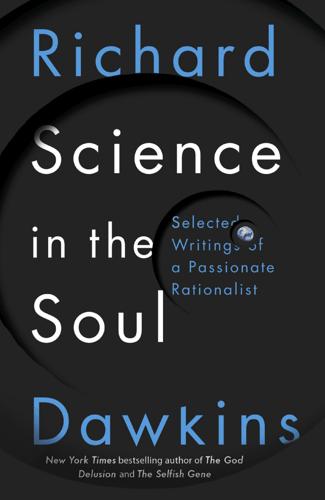
Science in the Soul: Selected Writings of a Passionate Rationalist
by
Richard Dawkins
Published 15 Mar 2017
Yet so great is the number of planets in the universe that even these minuscule odds yield an expectation that the universe contains a billion planets bearing life. And (here comes the anthropic principle) since we manifestly live here, Earth necessarily has to be one of the billion. Even if the odds against life arising on a planet are as low as one in a billion billion (which puts it well beyond the range we would classify as possible*3), the plausible calculation that there are at least a billion billion planets in the universe provides an entirely satisfying explanation for our existence. There will still plausibly be one life-bearing planet in the universe. And once we have granted that, the anthropic principle does the rest. Any being contemplating the calculation necessarily has to be on that one life-bearing planet, which therefore has to be Earth.
…
If we apply the principle of mediocrity to life on this planet, doesn’t it warn us that we would be foolhardy and vain to think that the Earth might be the only site of life in a universe of a hundred billion galaxies? It is a powerful argument, and I find myself persuaded by it. On the other hand, the principle of mediocrity is emasculated by another powerful principle, known as the anthropic principle: the fact that we are in a position to observe the world’s conditions determines that those conditions had to be favourable to our existence. The name comes from the British mathematician Brandon Carter, although he later preferred – with good reason – the ‘self-selection principle’. I want to borrow Carter’s principle for a discussion of the origin of life, the chemical event that forged the first self-replicating molecule and hence triggered natural selection of DNA and ultimately all of life.
…
Any being contemplating the calculation necessarily has to be on that one life-bearing planet, which therefore has to be Earth. This application of the anthropic principle is astonishing but watertight. I have oversimplified it by assuming that once life has originated on a planet, Darwinian natural selection will lead to intelligent and reflective beings. To be more precise, I should have been talking about the combined probability of life’s originating on a planet and leading, eventually, to the evolution of intelligent beings capable of anthropic reflection. It could be that the chemical origin of a self-replicating molecule (the necessary trigger for the origin of natural selection) was a relatively probable event but later steps in the evolution of intelligent life were highly improbable.

The Uninhabitable Earth: Life After Warming
by
David Wallace-Wells
Published 19 Feb 2019
Elements of Chaos Heat Death Hunger Drowning Wildfire Disasters No Longer Natural Freshwater Drain Dying Oceans Unbreathable Air Plagues of Warming Economic Collapse Climate Conflict “Systems” III. The Climate Kaleidoscope Storytelling Crisis Capitalism The Church of Technology Politics of Consumption History After Progress Ethics at the End of the World IV. The Anthropic Principle Acknowledgments Notes I Cascades It is worse, much worse, than you think. The slowness of climate change is a fairy tale, perhaps as pernicious as the one that says it isn’t happening at all, and comes to us bundled with several others in an anthology of comforting delusions: that global warming is an Arctic saga, unfolding remotely; that it is strictly a matter of sea level and coastlines, not an enveloping crisis sparing no place and leaving no life undeformed; that it is a crisis of the “natural” world, not the human one; that those two are distinct, and that we live today somehow outside or beyond or at the very least defended against nature, not inescapably within and literally overwhelmed by it; that wealth can be a shield against the ravages of warming; that the burning of fossil fuels is the price of continued economic growth; that growth, and the technology it produces, will allow us to engineer our way out of environmental disaster; that there is any analogue to the scale or scope of this threat, in the long span of human history, that might give us confidence in staring it down.
…
But one way we might manage to navigate that path without crumbling collectively in despair is, perversely, to normalize climate suffering at the same pace we accelerate it, as we have so much human pain over centuries, so that we are always coming to terms with what is just ahead of us, decrying what lies beyond that, and forgetting all that we had ever said about the absolute moral unacceptability of the conditions of the world we are passing through in the present tense, and blithely. IV The Anthropic Principle What if we’re wrong? Perversely, decades of climate denial and disinformation have made global warming not merely an ecological crisis but an incredibly high-stakes wager on the legitimacy and validity of science and the scientific method itself. It is a bet that science can win only by losing.
…
The fact of dramatic near-term climate change should inspire both humility and grandiosity, but this Drakean approach seems to me somehow to get the lesson both right and backward: supposing that the terms of your thought experiment should govern the meaning of the universe, yet unable to imagine that humans might make for themselves an exceptional fate within it. Fatalism has a strong pull in a time of ecological crisis, but even so it is a curious quirk of the Anthropocene that the transformation of the planet by anthropogenic climate change has produced such fervor for Fermi’s paradox and so little for its philosophical counterpoint, the anthropic principle. That principle takes the human anomaly not as a puzzle to explain away but as the centerpiece of a grandly narcissistic view of the cosmos. It’s the closest thing string-theory physics can bring us to empowering self-centeredness: that however unlikely it may seem that intelligent civilization arose in an infinity of lifeless gas, and however lonely we appear to be in the universe, in fact something like the world we live on and the one we’ve built are a sort of logical inevitability, given that we are asking these questions at all—because only a universe compatible with our sort of conscious life would produce anything capable of contemplating it like this.

Collider
by
Paul Halpern
Published 3 Aug 2009
In lieu of an explanation based exclusively on physical laws, Collins and Hawking decided to invoke what Australian physicist Brandon Carter dubbed the anthropic principle: the concept that the existence of humans constrains the nature of the universe. If the universe were sufficiently different, anthropic reasoning asserts, stars like the Sun wouldn’t have formed, planets like Earth would be absent, beings like humans would not exist, and there would be nobody to experience reality. Therefore the fact that we, as intelligent entities, are around implies that the universe must have been close enough to its present form to guarantee the emergence of such cognizant observers. Collins and Hawking applied the anthropic principle as follows to explain why the universe is isotropic: Suppose there are an infinite number of universes with all possible different initial conditions.
…
accelerators Cockcroft and Walton’s research and Cockcroft-Walton generator and Cockcroft’s attempt to break nuclear targets and complex realm of particles on definition of early experiments with at Fermilab Gamow’s quantum tunneling formula and Ising’s prototype of Lawrence’s cyclotron and lightning strikes as Powell’s construction of recycling of Superconducting Super Collider (SSC) and Van de Graaff ’s work with Wideröe’s design of Wideröe’s ray transformer and ADD model Adelberger, Eric ADM formulation air (element) Akeley, Lewis ALICE (A Large Ion Collider Experiment) detector alpha particles Alpher, Ralph Alternate Gradient Synchrotron (AGS) Ampère, André-Marie ancient Greece Anderson, Carl Andromeda galaxy angular momentum anthropic principle antigravity antimatter antineutrinos antiprotons antiquarks Antoniadas, Ignatius Aref ’eva, Irina argon, in particle detectors Aristotle Arkani-Hamed, Nima Arnowitt, Richard Ashcroft, Neil astronomy ATLAS (A Toroidal LHC ApparatuS) detector atomic bomb, development of atomic number atomism atoms ancient Greek concepts of Dalton’s work with electrostatic force and first use of term, in modern sense Lawrence’s time interval measurements involving nucleus of radioactive processes and relative weights of solar system comparison with Thomson’s “plum pudding” model of attractive forces axions Bardeen, John Barish, Barry baryons Beams, Jesse Becquerel, Henri Bednorz, Johannes Bekenstein, Jacob Benford, Gregory Berkeley Radiation Laboratory (“Rad Lab”) beta decay beta particles Bethe, Hans Bevatron Big Bang conditions dark energy scenarios and general theory of relativity on measurement of background radiation left over from particle detectors to reproduce conditions of Big Bang theory Big Crunch Big Rip Big Whimper blackbodies Blackett, Patrick black holes Bekenstein’s theory on expansion of first use of term Large Hadron Collider (LHC) research and creation of MACHOs (Massive Compact Halo Objects) and microscopic physics of public concern over Blewett, John Bohr, Niels Born, Max bosons asymmetry involving fermions and beginning of the universe and as category of elementary particles exchange particles and intermediate vector bosons Standard Model prediction of string theory and supersymmetry for uniting fermions and Yukawa’s electromagnetic research and bottom quarks Boyle, Robert Boyle’s Law braneworld hypothesis Brasch, Arno Breit, Gregory bremstrahlung Brin, David Brobeck, William Brout, Robert brown dwarfs bubble chambers, Fermilab Burstein, David Bush, George Herbert Walker Calabi, Eugenio Calabi-Yau spaces Caldwell, Robert calibration calorimeters carbon Carter, Brandon cathode rays Cavendish, Henry Cavendish Laboratory, Cambridge Chadwick’s research on neutrons at Cockcroft and Walton’s splitting of a lithium nucleus at Cockcroft-Walton generator at cyclotron proposal for description of Gamow’s research at Rutherford as director of Thomson as director of Walton’s linear accelerator at CDF (Collider Detector at Fermilab) Collaboration Central Design Group (CDG) Central Tracking Chamber, Tevatron CERN (European Organization for Nuclear Research) description of founding of funding of hardware knowledge of researchers at location of public fears of work of Chadwick, James Charge-Parity (CP) violation charginos charm quarks Cherenkov, Pavel Cherenkov detectors Chu, Paul Citizens Against Large Hadron Collider Cline, David Clinton, Bill closed strings closed timeline curves (CTCs) cloud chambers CMS (Composer Muon Solenoid) detector COBE (Cosmic Background Explorer) satellite Cockcroft, John Douglas cold dark matter Collider Detector at Fermilab (CDF) Collaboration Coma Cluster Collins.

The Knowledge Machine: How Irrationality Created Modern Science
by
Michael Strevens
Published 12 Oct 2020
The philosopher Richard Dawid makes a case along these lines—invoking the idea, mooted at the end of Chapter 10, that we can learn which kinds of explanatory elegance are signs of truth—in String Theory and the Scientific Method. 284 “post-empirical physics”: Another amendment to the iron rule would allow string theory to accrue scientific legitimacy by providing explanations of the values of the physical constants—which the Standard Model treats as brute posits—in a way that departs from the canon of shallow causal explanation, by appeal to what is called an “anthropic principle.” Anthropic explanations invoke the existence, in our universe, of intelligent observers, remarking that we should expect to see only physical constants that would allow complex life-forms like ourselves to evolve. Scientists and philosophers argue about whether such an aperçu genuinely helps to account for the physical constants having the (approximate) values that they do.
…
Scientists and philosophers argue about whether such an aperçu genuinely helps to account for the physical constants having the (approximate) values that they do. What’s clear is that anthropic derivations are not explanations of the shallow causal sort allowed by the iron rule: they invoke a fact, the presence of watchful intellects, that is causally irrelevant to the values of the constants. Thus, even if string theory, together with the anthropic principle, gives us reason to expect certain values, that prediction or explanation (if it is such) does not, by the lights of the iron rule, constitute the basis for a legitimate empirical test. 285 “It will follow orders”: Collins and Pinch, The Golem, 1. 286 “bumbling giant”: Collins and Pinch, The Golem, 2. 288 they assign confidence levels to hypotheses: These terms have precisely specified meanings.
…
Acheulean hand ax, 239, 240 “action at a distance,” 136–38 Adam (biblical figure), 212 aesthetic reasoning; See also beauty elimination from scientific argument, 209–10 particle physics and, 227–35 string theory and, 284–85 air, as fundamental substance, 2, 143 alchemy Newton and, 183–92 scientific investigation vs., 188 secrets of the philosopher’s stone, 214 Alternating Gradient Synchrotron, 233 ambition, 98, 283; See also motivation Anaximander, 2, 117, 143, 304n Anaximenes, 2 Ancient World of Sussex (Nibbs), 176 Anglican Church, 246, 250–52 anthropic principle, 318n–319n Archaeopteryx, 223 Archimedes, 295n archival function of scientific papers, 165–66 argument, See scientific argument Arian heresy, 187, 250–52 Aristarchus, 3 Aristotle Bacon and, 106, 243, 304n biology, 125–28 breadth of inquiry, 203–4 Cartesian rejection of intellectual authority of, 242 Cartesian worldview vs., 133–35, 307n and causal principles, 147 and explanatory thinking, 117 gravity theory, 27–28, 133–34 and humanism, 271 and iron rule, 248 Kuhn and, 23, 25, 123–24 and natural philosophy, 3 Newton’s methods compared to, 202–3 and philosophical reason, 134 prioritizing of broad patterns over small detail, 202–3 and psuche (soul), 126–29, 134, 140, 307n and quintessence, 133–34, 228 and rule of four, 313n on theories and observed facts, 201 arithmetic, 236–37 Aronowitz, Stanley, 64 arson, 66–67 assumptions auxiliary, 79–82, 94–96, 139, 140, 281 blaming of, 71–72 Eddington and, 161 astrographic bending number, 48–49, 157–58 astrographic telescope, 43–46, 48, 68–69, 69, 70, 111, 155–61 astronomy, 2–3, 295n Tycho Brahe and, 114–15 Copernican revolution, 26–27 developments in early 1600s, 106 Kepler’s laws of planetary motion, 193 Athanasius, 316n atheism, 207 Atlantis (hypothetical example), 120–22, 257–60, 262–64 atomic hypothesis, 193, 244 atomists, Greek, 126, 134, 143 atoms, 228; See also quantum mechanics authenticity, 267–68 auxiliary assumptions, 79–82, 94–96, 139, 140, 281 Avicenna (Ibn Sīnā), 117 ax, Acheulean vs.

Overtime: A Tor.Com Original
by
Charles Stross
Published 15 Sep 2010
Precog fugues aren’t deterministic, Bob: worse, they tend to disrupt whatever processes they’re predicting the outcome of. That’s why Forecasting Ops are so big on statistical analysis. If Kringle said we won’t see another Christmas party, you can bet they’ve rolled the dice more than the bare minimum to fit the confidence interval.” “So preempt his prophecy already! Use the weak anthropic principle: if we cancel next year’s Christmas party, his prophecy is delayed indefinitely. Right?” Andy rolls his eyes. “Don’t be fucking stupid.” “It was a long shot.” (Pause.) “What are we going to do?” “We?” Andy raises one eyebrow. “I am going to go home to the wife and kids for Christmas and try to forget about threats to our very existence for a bit.

Overtime
by
Stross, Charles
Published 7 Jun 2010
Precog fugues aren’t deterministic, Bob: worse, they tend to disrupt whatever processes they’re predicting the outcome of. That’s why Forecasting Ops are so big on statistical analysis. If Kringle said we won’t see another Christmas party, you can bet they’ve rolled the dice more than the bare minimum to fit the confidence interval.” “So preempt his prophecy already! Use the weak anthropic principle: if we cancel next year’s Christmas party, his prophecy is delayed indefinitely. Right?” Andy rolls his eyes. “Don’t be fucking stupid.” “It was a long shot.” (Pause.) “What are we going to do?” “We?” Andy raises one eyebrow. “I am going to go home to the wife and kids for Christmas and try to forget about threats to our very existence for a bit.
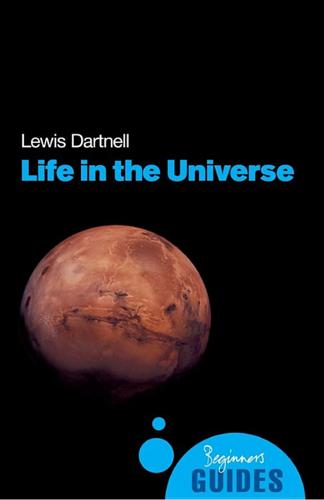
Life in the Universe: A Beginner's Guide
by
Lewis Dartnell
Published 1 Mar 2007
Had the universe been created with slightly different rules, that perhaps did not allow carbon synthesis, then our life would be impossible and we would not witness such a different universe. It should come as no surprise that things are exquisitely arranged to promote life, as we would never see it any other way, an idea known as the anthropic principle. The helium-burning reprieve in the core of a star does not last long and fusion begins grinding to a halt again as the available helium is used up. The interior of the star is now structured rather like a hot onion, with a core of carbon and oxygen surrounded by a shell of helium and an outer layer of hydrogen.
…
Planetary and Space Science 48(11): 1065. Index accretion disc acetylene acidity acidophiles aerobes aerobic respiration algae ALH84001 alien life alkaliphiles Alpha Centauri amino acids ammonia amono-peptides anaerobes anaerobic respiration Andromeda Galaxy Anomalocaris Antarctic Dry Valleys anthropic principle aquifers artificial life asteroids astrobiology definition astrometry atmosphere of Earth of Mars of Titan ATP ATP synthase autocatalysis autotrophs bacteria barophiles Betelgeuse Big Bang biofilms biosignature/biosign biosphere black smoker see hydrothermal vents blue shift bombardment Callisto (moon of Jupiter) Cambrian Explosion 55 Cancri A carbohydrate carbon isotopes carbonaceous chondrites carbonate-silicate cycle carbon dioxide carbon fixation carbonic acid cell membrane cells cryopreserved chemoautotrophs chemosynthesis chirality (handedness) chitin chlorophyll chloroplasts climate collagen comets complex life continental crust convergence co-rotation cycle cosmic radiation craters cryo-volcanism cryptoendoliths cyanide cyanobacteria cytoplasm Darwinian definition Darwin space telescope Darwin’s pond deep basalt aquifers Deimos (moon of Mars) denaturation Devon Island DNA Doppler effect Earth Earthshine EcoSphere ecosystem enantiomers Enceladus (moon of Saturn) endolithic environments endosymbiosis energy extraction inorganic environment enzymes Epsilon Eri Eridanus eukaryotes Europa (moon of Jupiter) evolution extinction extra-solar planets extremophiles eye fixation carbon methane nitrogen flight formaldehyde formamide fossil record free radicals Gaia galaxies Andromeda Galaxy metallicity Milky Way Galileo Galilei Galileo probe Ganymede (moon of Jupiter) glaciation, runaway glucose Goldilocks Principle Golgi body gravitational microlensing greenhouse effect grylloblattid insects habitable zone haemoglobin halophiles handedness see chirality Haughton Crater HD28185 HD209458b Herschel, William heterotrophs homeobox genes Hot Jupiters Hubble Space Telescope Huygens lander hydrogen hydrogen cyanide hydrosphere hydrothermal vents hyperthermophiles icebugs impact impact frustration inorganic energy interference patterns interferometry Io (moon of Jupiter) iron ferrous isotope jarosite Jupiter moons Kepler spacecraft Krebs cycle life artificial emergence of as energy disequilibrium as information transmission on Mars lithoheterotrophs lithosphere Lowell, Percival LUCA (last universal common ancestor) magnetic fields Mars atmosphere canals environmental collapse evolution of life on geography Hellas impact basin Meridiani Planum Olympus Mons survival of life Valles Marineris volcanoes water on M-class dwarves Mercury Meridiani Planum metabolism metallicity metamorphosis meteorites methane methane fixation methanogens Milky Way mitochondria Moon formation of mRNA multicellular organisms Murchison meteorite myxobacteria natural selection nebulae Neptune nitrogen nitrogen fixation nucleotides nucleus oceanic crust Opportunity Mars Rover organelles organics on Mars synthesis organisms multicellular organoheterotrophs Orion osmosis oxidation oxygen oxygenic processes ozone PAH see polycyclic aromatic hydrocarbons panspermia, permafrost Phobos (moon of Mars) photoautotrophs photosynthesis planetary orbits planet formation plate tectonics Pluto polarity polycyclic aromatic hydrocarbons polymers porphyrins potential difference prebiotic chemistry primordial soup progenote collective prokaryotes proteins protein synthesis protons Proxima Centauri psychrophiles pulsars radial velocity technique red dwarves see M-class dwarves redox redox couples redox potential red shift reduction respiration reverse transcriptase ribose ribosomes ribozymes Rio Tinto RNA RNA world rockcrawlers Rubisco enzyme salinity Saturn moons Schiaparelli, Giovanni sight silicon-based life Sirius SLiMEs Snowball Earth snow line Space Interferometry Mission spallation zone Spirit Mars rover stars birth of Sun-like stromatolites subduction zones subsurface lithotrophic microbial ecosystems see SLiMEs sugars Sun supernovae symbiosis tardigrades (water bears) Tau Bootis Tau Ceti temperature Terrestrial Planet Finder thermophiles threose/TNA tidal heating tidal locking Titan (moon of Saturn) transit method tree of life triple alpha process tRNA ultraviolet (UV) radiation uranium Uranus Urey-Miller reactions vegetation Venus Viking probes viruses volatiles volcanism Vostok, Lake water on Mars phase diagram
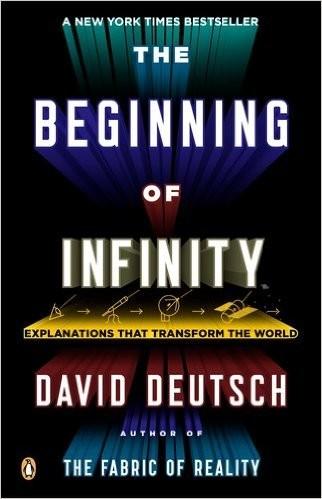
The Beginning of Infinity: Explanations That Transform the World
by
David Deutsch
Published 30 Jun 2011
It is only in the universes that contain astrophysicists that anyone ever wonders why the constants seem fine-tuned. This type of explanation is known as ‘anthropic reasoning’. It is said to follow from a principle known as the ‘weak anthropic principle’, though really no principle is required: it is just logic. (The qualifier ‘weak’ is there because several other anthropic principles have been proposed, which are more than just logic, but they need not concern us here.) However, on closer examination, anthropic arguments never quite finish the explanatory job. To see why, consider an argument due to the physicist Dennis Sciama.
…
Let us label the universes 1, 2, 3 and so on, in the order in which the device visits them. Sometimes Lyra also takes with her a measuring instrument that measures the constant D, and another that measures – rather like the SETI project, only much faster and more reliably – whether there are astrophysicists in the universe. She is hoping to test the predictions of the anthropic principle. But she can only ever visit a finite number of universes, and she has no way of telling whether those are representative of the whole infinite set. However, the device does have a second setting. On that setting, it takes Lyra to universe 2 for one minute, then universe 3 for half a minute, universe 4 for a quarter of a minute and so on.
…
Since there is now only one way for measuring instruments to respond to averages, typical values and so on, a rational agent in those universes will always get consistent results when reasoning about probabilities – and about how rare or common, typical or untypical, sparse or dense, fine-tuned or not anything is. And so now the anthropic principle can make testable, probabilistic predictions. What has made this possible is that the infinite set of universes with different values of D is no longer merely a set. It is a single physical entity, a multiverse with internal interactions (as harnessed by Lyra’s device) that relate different parts of it to each other and thereby provide a unique meaning, known as a measure, to proportions and averages over different universes.
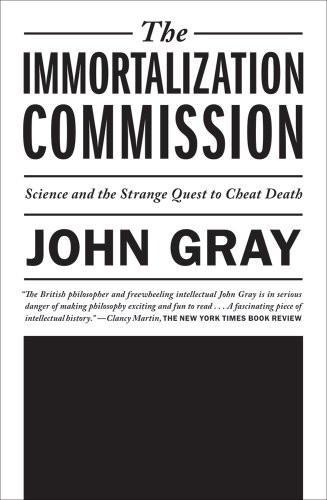
The Immortalization Commission: Science and the Strange Quest to Cheat Death
by
John Gray
Published 11 Apr 2011
Take the Argument from Design, which says that the order humans find in the world could not have come about by itself. If the world is ordered in a way that can be grasped by the human mind, the world must have been created by something like the human mind – or so defenders of design believe. Sometimes they invoke the anthropic principle – the idea that humans could only come into being in a universe of roughly the sort that actually exists. But the anthropic principle points the other way, especially when the multi-world theory is taken into account. If our universe is one of many, unlike others in containing observers like ourselves, there is no need to posit a designer. Most universes will be too chaotic to allow the emergence of life or mind.
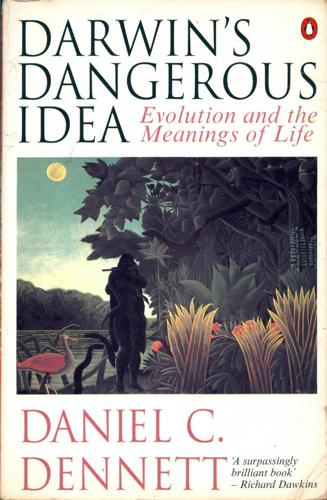
Darwin's Dangerous Idea: Evolution and the Meanings of Life
by
Daniel C. Dennett
Published 15 Jan 1995
So isn't it a wonderful fact that the laws are just right for us to exist? Indeed, one might want to add, we almost didn't make it! Is this wonderful fact something that needs an explanation, and, if so, what kind of explanation might it receive? According to the Anthropic Principle, we are entitled to infer facts about the universe and its laws from the undisputed fact that we (we anthropoi, we human beings) are here to do the inferring and observing. The Anthropic Principle comes in several flavors. (Among the useful recent books is Barrow and Tipler 1988 and Breuer 1991. See also Pagels 1985, Gardner 1986.) In the "weak form," it is a sound, harmless, and on occasion useful application of elementary logic: if x is a necessary condition for the existence of y, and y exists, then x exists.
…
It has to contain such elements for us to exist, we may grant, but it might not have contained such elements, and if that had been the case, we wouldn't be here to be dismayed. It's as simple as that. Some attempts to define and defend a "strong form" of the Anthropic Principle strive to justify the late location of the "must" as not casual expression but a conclusion about the way the universe necessarily is. I admit that I find it hard to believe that so much confusion and controversy are actually generated by a simple mistake of logic, but the evidence is really {166} quite strong that this is often the case, and not just in discussions of the Anthropic Principle. Consider the related confusions that surround Darwinian deduction in general. Darwin deduces that human beings must have evolved from a common ancestor of the chimpanzee, or that all life must have arisen from a single beginning, and some people, unaccountably, take these deductions as claims that human beings are somehow a necessary product of evolution, or that life is a necessary feature of our planet, but nothing of the kind follows from Darwin's deductions properly construed.
…
Then he must be single, right? (That's a truth of logic.) Poor John — he can never get married! The fallacy is obvious in this example, and it is worth keeping it in the back of your mind as a template to compare other arguments with. Believers in any of the proposed strong versions of the Anthropic Principle think they can deduce something wonderful and surprising from the fact that we conscious observers are here — for instance, that in some sense the universe exists for us, or perhaps that we exist so that the universe as a whole can exist, or even that God created the universe the way He did so that we would be possible.
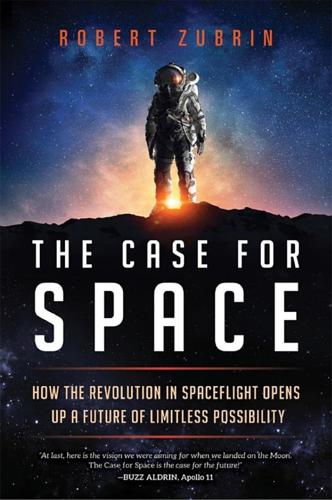
The Case for Space: How the Revolution in Spaceflight Opens Up a Future of Limitless Possibility
by
Robert Zubrin
Published 30 Apr 2019
However, it is easy to show that if even one of them were significantly different from its actual magnitude, life would be impossible. In short, it seems that the laws of physics have been carefully fine-tuned in such a way as to make life possible.17 How can we explain this? One theory that has been advanced is known as the anthropic principle.18 According to this theory, there is no mystery at all, because if the universe were not tuned for life, we would not be here to ask why it is. In my opinion, this is nonsensical. It is equivalent to answering the question “Why didn't the United States and the Soviet Union have a nuclear war?”
…
See delta-v Adams, John Couch, 152 Adonis (asteroid), 127 Advanced Technology Large-Aperture Space Telescope (ATLAST), 251 aerial algae, seeding of on Venus, 220 aerobraking, 103, 133, 164, 173, 339 Aerojet, 145 aeroshell, 339 ALH84001 (SNC meteorite), 120 Allen, Paul, 29–30, 177 Allison, Graham, 309 Alpha Centauri (star), 181, 182, 185 time to reach using chemical rocket systems, 183–84 using fission propulsion, 185 using fusion propulsion, 191 using laser projector light sails, 200, 211 using nuclear salt-water rockets, 188 using photon rockets, 195 using thin solar sails, 198 Altair (star), 240 Alvarez hypothesis (Walter and Luis Alvarez), 290, 298 Amazon, 34 Ambani, Mukesh, 176 American Historical Association, 272 American Institute of Aeronautics and Astronautics, 244 Anderson, Eric, 138 Andrews, Dana, 202–203 Ansari, Anousheh, 29–30 anthropic principle, 261 antifreedom movement, 309–10 antimatter for propulsion, 90, 174, 191–95, 207 as a weapon, 208 antisatellite systems (ASAT), 63–64 apogee, 96, 163, 339 Apollo (asteroid), 127 Apollo program (NASA), 12, 54, 74, 76, 77, 102, 104, 153, 296, 317, 343 chemical analysis of typical lunar samples, 72, 73–74 impact on STEM education in US, 285–86, 285 mission driven nature of, 329 Applied Fusion Systems, 180 Aquila (constellation), 240 Ariane (European rockets), 36 Ariane V (heavy-lift rocket), 107 Arrhenius, Svante, 255 artificial gravity.
…
See low Earth orbit Lerner, Eric, 180 Letters from an American Farmer (Crèvecoeur), 274 LEV (Lunar Excursion Vehicle), 70, 71, 79–81 chart of range and lunar accessibility, 81 LeVerrier, Joseph, 152 Lewicki, Chris, 138 Lewis, John, 136, 138, 150 life, search for, 12–14, 254–55, 297 anthropic principle, 261 See also extraterrestrials, search for; intelligence, search for Life of the Cosmos, The (Smolin), 262 light sails, 195–201 cannot thrust to the sun, 206 thin solar sails for interstellar travel, 197–99, 198 use of mirror effect, 203 Limited Nuclear Test Ban Treaty (1963), 186–87 limited-resources views, 301–305, 308 “carrying capacity,” 313–14 Lindbergh, Charles, 29 liquid oxygen (LOX).

Global Catastrophic Risks
by
Nick Bostrom
and
Milan M. Cirkovic
Published 2 Jul 2008
In particular, some of the predictions derived from past records are unreliable due to observation selection, thus introducing an essential qualification to the general and often uncritically accepted gradualist principle that 'the past is a key to the future'. This resulting anthropic overconfidence bias 3 For a summary of vast literature on observation selection, anthropic principles, and anthropic reasoning in general, see Barrow and Tipler (1986); Balashov (1991); and Bostrom (2002a). 122 Global catastrophic risks time Fig. 6.1 A schematic presentation ofthe single-event toy model. The evidence E consists of our present-day existence. is operative in a wide range of catastrophic events, and leads to potentially dangerous underestimates of the corresponding risk probabilities.
…
Stellar engines for Kardashev's type I I civilisations. ]. Brit. Interplan. Soc., 53, 297-306. Badescu, V. and Cathcart, R.B. (2006). Use of class A and class C stellar engines to control Sun's movement in the galaxy. Acta Astronautica, 58, 1 1 9-129. B alashov, Yu. (1991). Resource Letter AP- 1 : The Anthropic Principle. Am. ]. Phys., 59, 1069-1076. Ball, ).A. ( 1973). The Zoo hypothesis. Icarus, 19, 347-349. Barrow, J . D . and Tipler, F.). (1986) . The Anthropic Cosmological Principle (New York: Oxford University Press). Baxter, S. (2000). The planetarium hypothesis: a resolution of the Fermi paradox. ].
…
Bulgatz, ). ( 1 992). Ponzi Schemes, Invaders from Mars and More Extraordinary Popular Delusions and the Madness of Crowds (New York: Harmony Books). Cantril, H . ( 1947). The Invasionfrom Mars: A Study in the Psychology of Panic (Princeton, NJ: Princeton University Press). Carter, B . ( 1983). The anthropic principle and its implications for biological evolution. Philos. Trans. Royal Soc. London A, 3 1 0, 347-363. Caves, C. (2000). Predicting future duration from present age: a critical assessment. Contemp. Phys., 41 , 143. Cavicchioli, R. (2002). Extremophiles and the search for extraterrestrial life. Astrobiology, 2, 281-292.
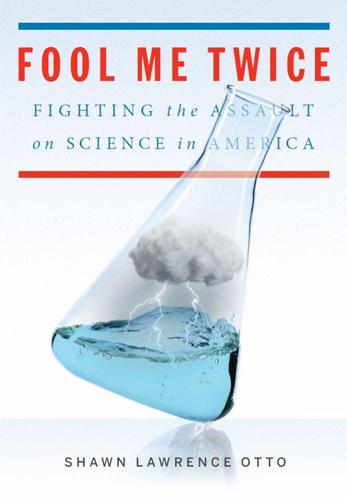
Fool Me Twice: Fighting the Assault on Science in America
by
Shawn Lawrence Otto
Published 10 Oct 2011
And you see that and you say, How could it just be a big bang … that [made] everything come out so perfectly, to be perfectly conducive to life on this planet. It is just impossible, to me, that it could have been created just by random time and chance.9 Here we find another argument popular with creationist policy makers, which cosmologists call “the anthropic principle.” It is related to the problems we have estimating probabilities and statistics in such things as gambling, life, and economic situations that involve insurance, investment, and risk. Imagine, for instance, the feelings Bachmann’s blade of grass would have when the great holy golf ball landed upon it.
…
July 11, 2011 INDEX A Abernathy, Ralph, 99–100 Absolutism, 127–28 Abstinence-only sex education, 17, 274–76, 279 Adler Planetarium projector, 20 Affirmative action, 114–15 Agriculture, advances in, 25 Alternative theories, 11–12, 15. See also Creationism America Competes Act, 156 American Science Pledge, 317–20 Anthropic principle, 169–70 Anthropology, cultural, 114 Antiauthoritarian system (top wing), 30–33, 31, 43, 56, 112–13, 246, 249 Antibiotics, use of, 165 Anti-evolution advocates. See Creationism Anti-intellectualism, 246, 286–87 Antiscience anti-intellectualism and, 246, 286–87 arguments of partisans of, 277–78 belief resistance and, 291–92 in China, 58, 220, 285–86 concept collapse and, 118 of conservatives, 284–85, 287–88 culture wars and, 123–24, 163 of evangelical movement, 107–11 fairness doctrine and, 143–46 feedback loop and, 286 neoconservative movement and, 132–34 New Age movement, 134–38 partisanship, 277–82, 285, 290 politics, 60, 63–65 postmodern, 112–15, 121–22, 132–34, 136, 166–67 of Republican Party, 18–19, 296 scientists and, 159 Shadow AAAS an, 273–78 of U.S.

Superintelligence: Paths, Dangers, Strategies
by
Nick Bostrom
Published 3 Jun 2014
Carroll, John B. 1993. Human Cognitive Abilities: A Survey of Factor-Analytic Studies. New York: Cambridge University Press. Carter, Brandon. 1983. “The Anthropic Principle and its Implications for Biological Evolution.” Philosophical Transactions of the Royal Society A: Mathematical, Physical and Engineering Sciences 310 (1512): 347–63. Carter, Brandon. 1993. “The Anthropic Selection Principle and the Ultra-Darwinian Synthesis.” In The Anthropic Principle: Proceedings of the Second Venice Conference on Cosmology and Philosophy, edited by F. Bertola and U. Curi, 33–66. Cambridge: Cambridge University Press.
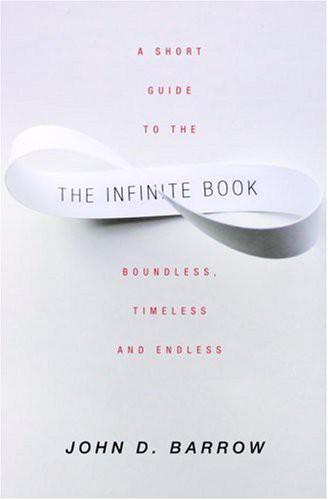
The Infinite Book: A Short Guide to the Boundless, Timeless and Endless
by
John D. Barrow
Published 1 Aug 2005
If the Universe has a centre and conditions vary with distance from that centre, then there will be some places where conditions make life impossible and other places where its existence is most likely. If the latter conditions were to arise near the centre, then this would provide a physical reason (rather than a philosophical prejudice) why we might find ourselves near the centre of the Universe. The modern discussion of the Anthropic Principles in cosmology has developed this insight further, see for example J.D. Barrow and F.J. Tipler, The Anthropic Cosmological Principle, Oxford University Press, 1986, where Kant’s progressive cosmology is discussed in more detail in section 10.2. 7. I. Kant, op. cit., pp. 139–40. 8. The Complete Works of Montaigne, trans.

Toast
by
Stross, Charles
Published 1 Jan 2002
I felt a need to laugh. “We aren’t part of some dumb software syncitium! We’re here to stop you, you fool. Or at least to reduce the probability of this time-stream entering a Tipler catastrophe.” Houndtooth Man frowned. “Am you referring to Frank Tipler? Citation, physics of immortality or strong anthropic principle?” “The latter. You think it’s a good thing to achieve an informational singularity too early in the history of a particular universe? We don’t. You young gods are all the same: omniscience now and damn the consequences. Go for the P-Space complete problem set, extend your intellect until it bursts.

Scary Smart: The Future of Artificial Intelligence and How You Can Save Our World
by
Mo Gawdat
Published 29 Sep 2021
Smart as we are, we’ve never really managed to realize that war comes with massive casualties and collateral damage, and that after the war, mostly, we go back to the same norm – one we could have preserved before we started, without a load of pain and vengeance to deal with for decades afterwards. Remember the song, ‘War (What is it good for)’? Absolutely Nothing! In his book Superintelligence, Nick Bostrom (a Swedish-born philosopher at the University of Oxford known for his work on existential risk, the anthropic principle, human enhancement ethics and superintelligence risks) predicts situations in which we face serious threats as a result of superintelligence. He calls it the vulnerable world hypothesis (VWH). Bostrom states that there is bound to be some level of technology in the future at which civilization almost certainly gets destroyed, unless quite extraordinary and historically unprecedented degrees of preventive policing and/or global governance are implemented.
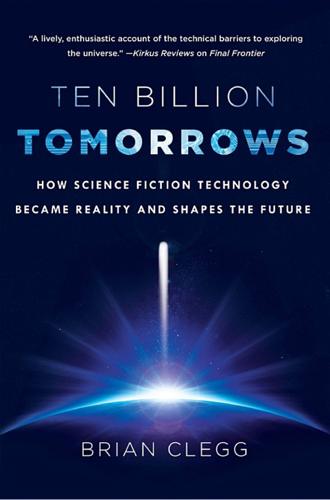
Ten Billion Tomorrows: How Science Fiction Technology Became Reality and Shapes the Future
by
Brian Clegg
Published 8 Dec 2015
But scientists are wary of anything that suggests a special place for the Earth, when there is no good reason for it to receive such special treatment. Of course, if there were only one planet with life, then it would be bound to be, by definition, the planet on which the inhabitants were thinking “Why us?”—a variant on the so-called anthropic principle—so strictly speaking the “no special place” argument has no good scientific basis, but it is still hard to believe that we are unique. The size of the Milky Way galaxy, let alone the whole universe, suggests that the second option that they are out there but haven’t found us is eminently possible.
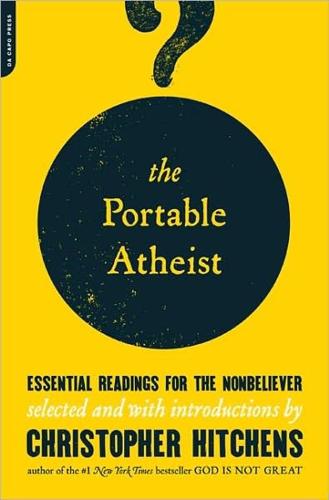
The Portable Atheist: Essential Readings for the Nonbeliever
by
Christopher Hitchens
Published 14 Jun 2007
And Aristotle, in fact, deduced several dozen first causes in his theology. The second standard Western argument using reason for God is the so-called argument from design, which we have already talked about, both in its biological context and in the recent astrophysical incarnation called the anthropic principle. It is at best an argument from analogy; that is, that some things were made by humans and now here is something more complex th t wasn’t made by us, so maybe it was made by an intelligent being smarter than us. Well, maybe, but that is not a compelling argument. I tried to stress earlier the extent to which misunderstandings, failure of the imagination, and especially the lack of awareness of new underlying principles may lead us into error with the argument from design.
…
His lips are curious in being the exact same shade of swarthiness as his face, like muscles in a sepia anatomy print. As he raises his glass to these exemplary lips Dale intervenes with “I think, sir—” “Fuck the ‘sir’ stuff. Name’s Myron. Not Ron, mind you. Myron.” “I think it’s a little more than that, what I’m trying to say; the puddle analogy is as if the anthropic principle were being argued from the Earth as opposed to the other planets, which of course we can now see, if we ever doubted it, aren’t suitable for life. In that sense, yes, we’re here because we’re here. But in the case of the universe, where you have only one, why should, say, the observed recessional velocity so exactly equal the necessary escape velocity?”
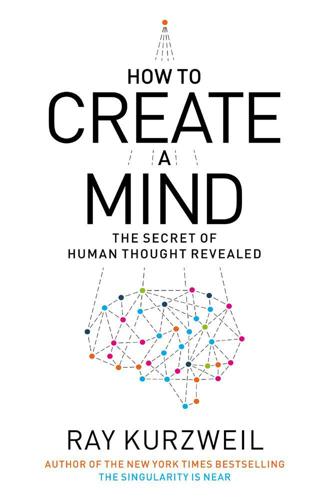
How to Create a Mind: The Secret of Human Thought Revealed
by
Ray Kurzweil
Published 13 Nov 2012
The standard model of physics has dozens of constants that need to be precisely what they are, or atoms would not have been possible, and there would have been no stars, no planets, no brains, and no books on brains. That the laws of physics are so precisely tuned to have allowed the evolution of information appears to be incredibly unlikely. Yet by the anthropic principle, we would not be talking about it if it were not the case. Where some people see a divine hand, others see a multiverse spawning an evolution of universes with the boring (non-information-bearing) ones dying out. But regardless of how our universe got to be the way it is, we can start our story with a world based on information.
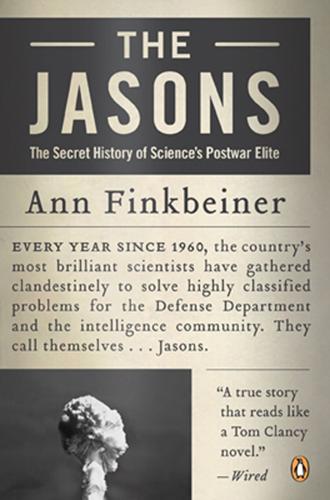
The Jasons: The Secret History of Science's Postwar Elite
by
Ann Finkbeiner
Published 26 Mar 2007
At the time Wheeler was at Princeton, working on the structure of spacetime on the atomic scale—he called it “quantum foam”—and fusion for the hydrogen bomb. The split between nearly theological physics and hard-eyed defense is classic Wheeler. On the one hand, he coauthored the standard book on gravitation/general relativity; he named “black holes”; he worked on the anthropic principle, which explores the possibility that the universe evolved so that we could observe it. On the other hand, Wheeler—along with Edward Teller and Luis Alvarez—was one of a small but public and influential group of physicists supporting the development of the hydrogen bomb; his colleagues’ disapproval, he said, was “deeply troubling.”
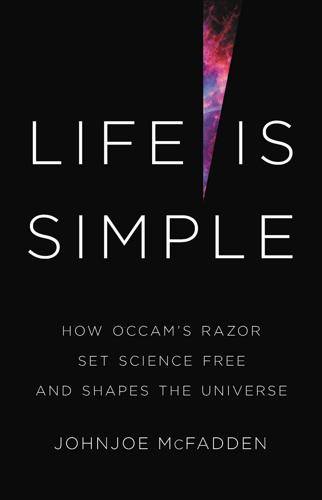
Life Is Simple: How Occam's Razor Set Science Free and Shapes the Universe
by
Johnjoe McFadden
Published 27 Sep 2021
Understanding how the universe came to have these values is known as the fine-tuning problem. Barrow and Tipler argue that these extraordinarily unlikely values can only be accounted for by the fact that we live in an anthropic universe in the sense that, if the fundamental constants had different values then we would not be here to lament our non-existence. The anthropic principle does not account for the unlikely values, it merely accepts their necessity for existence. It does not explain how the universe arrived at its finely tuned combination of fundamental constants nor who, or what, threw the dice. There seems to be only a limited number of possibilities. Theists seize on these cosmic coincidences as evidence of a divine hand knowingly turning the tumblers to their precise numbers, just as William Paley had argued that a divine watchmaker must have fashioned biological complex structures, such as the eye.
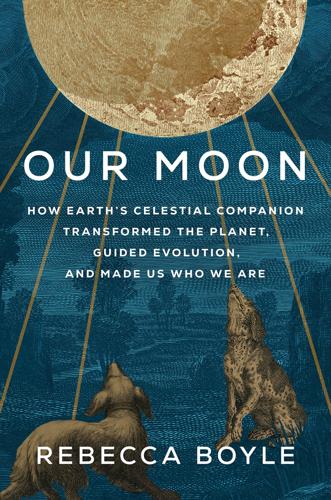
Our Moon: How Earth's Celestial Companion Transformed the Planet, Guided Evolution, and Made Us Who We Are
by
Rebecca Boyle
Published 16 Jan 2024
If the Moon were just 10 percent larger, the Moon itself would cause Earth’s axis to become unstable.6 If Theia and Earth 1.0 had been remade into a slightly bigger Moon and a slightly littler Earth, we probably wouldn’t be here. All this particularity has led more than a few scientists to speculate on the “anthropic principle,” the notion that the universe is observable because it is organized in such a way that we arose and are still safely here to observe it. There are plenty of planets and plenty of moons out there, but only systems that are just right would give rise to creatures that can observe reality. Since we exist and are observers of the universe, then Earth must have those just-right properties, even if those properties are apparently rare.
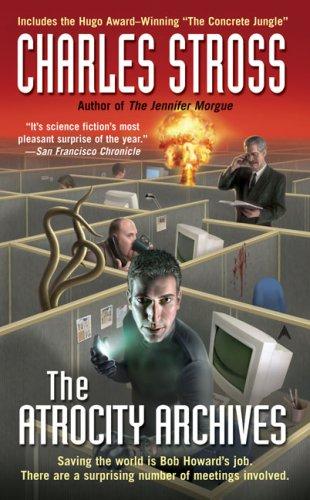
Atrocity Archives
by
Stross, Charles
Published 13 Jan 2004
I'm not clear on the details, but apparently it's at the root of one particularly weird directed invocation: if we can set up a gauge field for probability metrics we can tune in on specific EIs fairly--" "EIs?" "External Intelligences. What the mediaeval magic types called demons, gods, spirits, what have you. Sentient aliens, basically, from those cosmological domains where the anthropic principle predominates and some sort of sapient creatures have evolved. Some of them are strongly superhuman, others are dumb as a stump from our perspective. What counts is that they can be coerced, sometimes, into doing what people want. Some of them can also open wormholes--yes, they've got access to negative matter-and send themselves, or other entities, through.
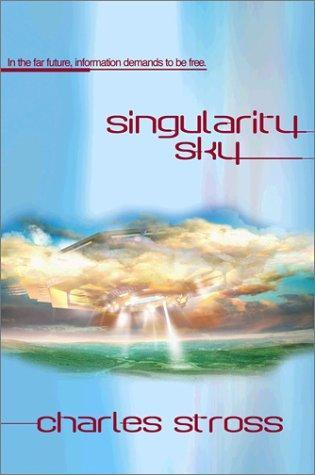
Singularity Sky
by
Stross, Charles
Published 28 Oct 2003
"But maybe circumstances arising then formed a necessary precondition for the Eschaton's existence, or the existence of something related to but beyond the Eschaton. There's a whole school of cosmology predicated around the weak an-thropic principle, that the universe is as it seems because, if it was any other way, we would not exist to observe it. There is a… less popular field, based on the strong anthropic principle, that the universe exists to give rise to certain types of en-tity. I don't believe we'll ever understand the Eschaton until we understand why the universe exists." She smiled at him toothily, and let a Prussian diplomat rescue her with the aid of a polite bow and an offer to explain the fall of Warsaw during the late unpleasantness in the Baltic.

Wireless
by
Charles Stross
Published 7 Jul 2009
They work really well, don’t you think?” Davy made a fist and stared at the back of it. LOVE. “Ye cunt. Ah still dinnae believe in ye.” The Devil shrugged. “Nobody’s asking you to believe in me. You don’t, and I’m still here, aren’t I? If it makes things easier, think of me as the garbage-collection subroutine of the strong anthropic principle. And they”—he stabbed a finger in the direction of the overhead LEDs—“work by magic, for all you know.” Davy picked up his glass and drained it philosophically. The hell of it was, the Devil was right: now that he thought about it, he had no idea how the lights worked, except that electricity had something to do with it.

When Computers Can Think: The Artificial Intelligence Singularity
by
Anthony Berglas
,
William Black
,
Samantha Thalind
,
Max Scratchmann
and
Michelle Estes
Published 28 Feb 2015
Humanity could not be be any more intelligent because in that case we would have already built an intelligent machine when we were slightly less intelligent. So at the point of being able to build an intelligent machine, humanity needs to have almost exactly the intelligence that it has now, and no more. This is an instance of the anthropic principle, namely that the world cannot be different than it is because if it was different then we would not be here to experience it. Related Work Many very recent new books This book started as an informal paper with titled “Artificial Intelligence will kill your Grandchildren” initially published in 2008.
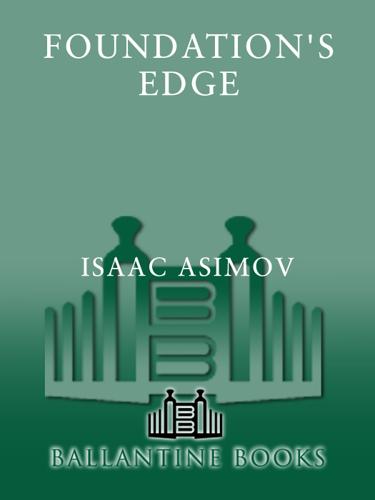
Foundation's Edge
by
Isaac Asimov
Published 28 Dec 2010
Human beings prefer to live on planets with suitable characteristics, and then when all habitable planets resemble each other in these characteristics, some say, ‘What an amazing coincidence,’ when it’s not amazing at all and not even a coincidence.” “As a matter of fact,” said Pelorat calmly, “that’s a well-known phenomenon in social science. In physics, too, I believe—but I’m not a physicist and I’m not certain about that. In any case, it is called the ‘anthropic principle.’ The observer influences the events he observes by the mere act of observing them or by being there to observe them. But the question is: Where is the planet that served as a model? Which planet rotates in precisely one Galactic Standard Day of twenty-four Galactic Standard Hours?” Trevize looked thoughtful and thrust out his lower lip.

Algorithms to Live By: The Computer Science of Human Decisions
by
Brian Christian
and
Tom Griffiths
Published 4 Apr 2016
For a fascinating and more detailed analysis of the probable life spans of cities and corporations, see the work of Geoffrey West and Luis Bettencourt—e.g., Bettencourt et al., “Growth, Innovation, Scaling, and the Pace of Life in Cities.” a flurry of critical correspondence: For example, see Garrett and Coles, “Bayesian Inductive Inference and the Anthropic Principles” and Buch, “Future Prospects Discussed.” a raffle where you come in knowing nothing: The statistician Harold Jeffreys would later suggest, instead of Laplace’s (w+1)⁄(n+2), using rather (w+0.5)⁄(n+1), which results from using an “uninformative” prior rather than the “uniform” prior (Jeffreys, Theory of Probability; Jeffreys, “An Invariant Form for the Prior Probability in Estimation Problems”).

The Collected Stories of Vernor Vinge
by
Vernor Vinge
Published 30 Sep 2001
“You know, it’s almost as if someone were picking on the human race,” he mused. “Out of all the solar systems, that we should be the on the low metal one, the outsider.” He didn’t like the idea. It smacked of the theistic fantasy Cor Ascuasenya so loved: humanity as doormat to the gods. “You’ve got it backward, my sir. Ever hear of the anthropic principle? Most likely, intelligent life exists on Tu exactly because we are different from the others. Think what an abundance of metals would mean. It’s not just a matter of wealth, millions of ounces of iron available for large scale construction. My guess is such concentrations of metals would change the surface chemistry so much that life would never develop.”

Blue Mars
by
Kim Stanley Robinson
Published 23 Oct 2010
Or Deleuze’s own tendencies to megalomania; he thought he could explain everything. In fact Sax was suspicious of all the current cosmology, placing humanity as it did right at the center of things, time after time. It suggested to Sax that all these formulations were artifacts of human perception only, the strong anthropic principle seeping into everything they saw, like color. Although he had to admit some of the observations seemed very solid, and hard to accept as human perceptual intrusion, or coincidence. Of course it was hard to believe that the sun and Luna looked exactly the same size when seen from Earth’s surface, but they did.
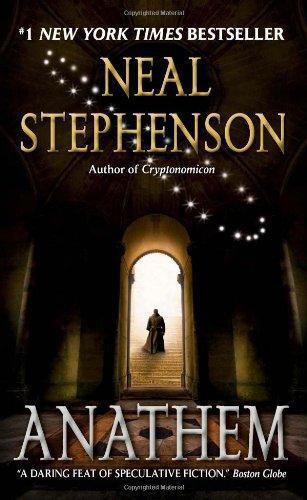
Anathem
by
Neal Stephenson
Published 25 Aug 2009
“It exists in my mind as a jumble of moments when I thought or did things—and every one of those moments, Raz, could have gone another way. And all of the other outcomes would have been bad ones. I’m certain of that. I replay it in my head over and over. And in every case, I happened to do the right thing.” “Well, it’s kind of like the anthropic principle at work, isn’t it?” I pointed out. “If anything had been a little different, you’d be dead—and so you wouldn’t have a brain to remember it with.” Arsibalt said nothing for a while, then sighed. “That is as unsatisfactory as anthropic arguments usually are. I’d prefer the alternate explanation.”

Rationality: From AI to Zombies
by
Eliezer Yudkowsky
Published 11 Mar 2015
Afterward, when your amazing clever reasoning turns out to have been stupid, you’ll have ended up in a much better position if your amazing clever reasoning was of the first type. When I look back upon my past, I am struck by the number of semi-accidental successes, the number of times I did something right for the wrong reason. From your perspective, you should chalk this up to the anthropic principle: if I’d fallen into a true dead end, you probably wouldn’t be hearing from me in this book. From my perspective it remains something of an embarrassment. My Traditional Rationalist upbringing provided a lot of directional bias to those “accidental successes”—biased me toward rationalizing reasons to study rather than not study, prevented me from getting completely lost, helped me recover from mistakes.